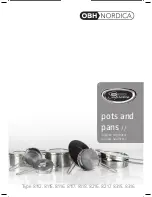
SOI/DT 2006-01 dmm
16/71
599 37 47-13
3.7.5 Washing
additives
1. SOFTENER: (Cationic surface-active agent + fragrance): This additive is introduced automatically by the
appliance during the final rinse. It softens the surface of the fabric, which thus remains soft to the touch
and easier to iron. If used incorrectly before or during the wash, or if introduced too early into the tub by
the water fill system, its action is rendered ineffective by the surface-active agents contained in the
detergent.
2. BLEACH: (sodium hypochlorite) - Used for white fabrics, before the main wash cycle. 150 ml of bleach
will be sufficient for a short, low-temperature wash. Care should be taken when bleaching: certain stains
(blood, perspiration), if bleached before the enzyme-based function, may become permanently fixed to
the fabric, giving an unsatisfactory washing result. In normal washes, the bleach must be introduced
automatically by the washing machine during the first rinse, at the end of the washing phase and after
the detergent has performed its functions, since it destroys the enzymes contained in the detergent. If
the stains have already become permanent after a previous wash, they will be impossible to remove.
3. DELICATE
BLEACH
(hydrogen
peroxide) - Oxygen is not as strong as chloride, especially if the water is
very hard. It must always be used together with the detergent, both for hand washing and when using a
washing machine. It may be used for pre-treatment, but always followed by a wash using detergent. It
may be used at all temperatures and during the wash (together with detergent), or poured directly onto
the fabrics.
3.7.6 Bleaching
Bleaching is generally performed after the wash (by hand or in a machine), except in the case of wine, tea or
coffee stains etc.
Light-sensitive stains (tomato etc.), if appearing on the fabrics after the wash, may disappear when the fabric
is exposed to sunlight for a time (action of the sun's rays).
If a white fabric is treated with bleach and then exposed to sunlight, the optical effect may be cancelled, and
yellowish stains may become noticeable. However, these will tend to disappear when the garment is no
longer exposed to the sun.
Using bleaches
Various types of bleach exist to suit different conditions of use, since they remain active either within or in
excess of certain temperatures.
Hypochlorite: must always be used cold (during the 1st rinse)
Peroxide: may be used above 60° during the washing phase
Delicate bleach (solid): a teaspoonful should be added to the detergent. Suitable for all types of fabrics,
including coloureds. Active at medium and high temperatures.
Delicate bleach (liquid, i.e. hydrogen peroxide) should be introduced into the appropriate compartment.
Active perborate: active at temperatures in excess of 60°C.
N.B.
If hydrogen peroxide or sodium hypochlorite are used for bleaching, or in the presence of
"activators" attached to the garments (ferrous accessories such as buttons, buckles, zips, hooks etc.), these
may cause holes in the fabric or stiffness of the fibres due to re-deposited oxides which form the well-known
"rust spots".
Содержание LAUNDRY
Страница 2: ...SOI DT 2006 01 dmm 2 71 599 37 47 13 ...
















































